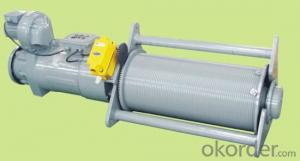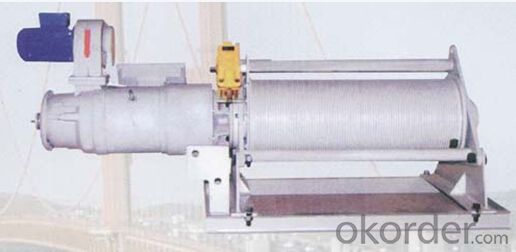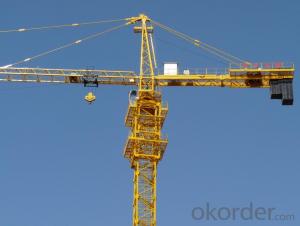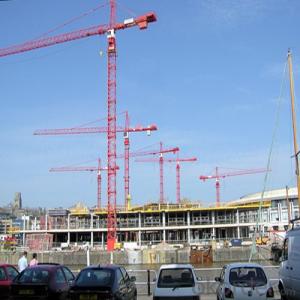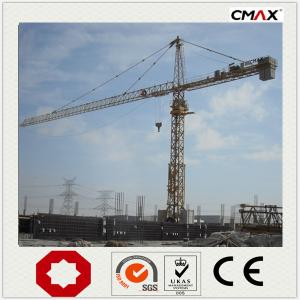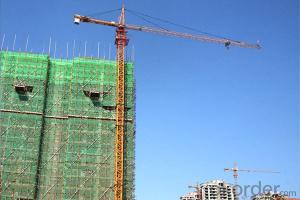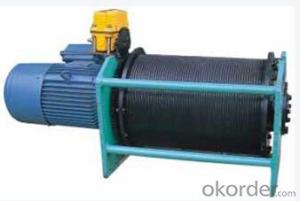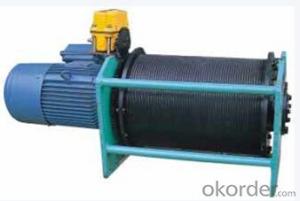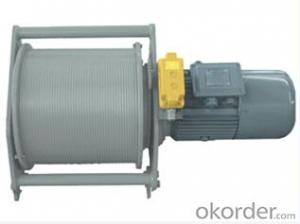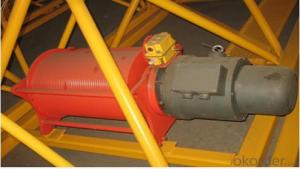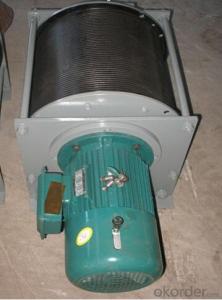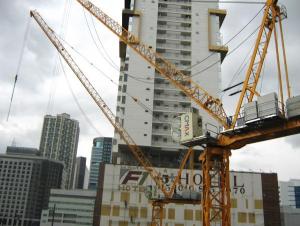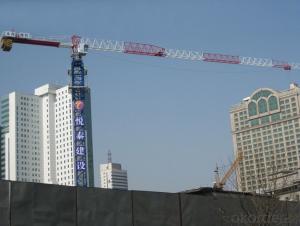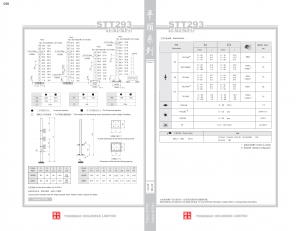trolley mechanism 4D3V2
OKorder Service Pledge
OKorder Financial Service
You Might Also Like
Introduction
According to the France Potain Company’s mature technologies and requirements, the series of the mechanism of the buggy is designed, and it is consitituted with the three-phase asynchronous motor torque, the inner planetery reduction gear, wound roll, rack, and other componets.Through voltage regulation and an eddy current brake role can be low, medium, high rate, the electrical own electromagnetic disc brake, a brake steady speed, brake safe, reliable, accurate positioning, the most suitable for Potain tower crane series and replace imported products.
Performance parameters
Model:4D3V2
Rated stalling torque of torque motor(N.M):75
Rated single rope tension (N):2500
Single-rope linear velocity(m/min):0-58
Rope capacity(m):46
Relevant parameter of the suitable tower crane
--Max lifting load(t):5
--Max crest(m):48


- Q: Minimum QTZ63 tower crane special electric box open for many A
- Minimum QTZ63 tower crane special electric box for 100A circuit breaker. The maximum lifting weight is: 6T; lifting torque: 63kN; m; tower crane lifting height is 40m (independent), 140m (attachment); power: 31.7 kW; work range: 2---57m.
- Q: I found part of her story online, but can't find anything as to what happened to the 1000+ paper cranes she made before she died. Were they given to family members or given to a museum? Or have they been destroyed by time? I would feel terrible if all her work was destroyed by time or worse. :-(Thank you so much for answering.Peace.
- Her parents buried most of the cranes with her. They also gave the cranes to some of her close friends and relatives.
- Q: Only two magnification and four magnification are seen in the data, and the difference in weight is 0.1T. 10How does this magnification change during construction? Do you know that the door crane is changing the grab tower?
- Magnification, in simple terms, refers to several ropes through the hookIf it is one in and out of two wire rope, that is two magnificationSimilarly, two into two out is four magnification
- Q: I don't know what the difference is. :(
- an egret is any of several herons and several of which develop milky white plumes during the breeding season,some herons are called egrets. Cranes are a family of large, long-legged and long-necked birds Unlike the similar-looking but unrelated herons, cranes fly with necks outstretched, not pulled back. Cranes’ necks are a shorter than those of heron.Herons curve their necks into an “S” shape and when they are flying they pull them totally back, while cranes necks’ stick straight out. Cranes also have shorter beaks than herons.
- Q: I need to make a crane in my mechanical class. I can use anything pretty much (pulleys, levers, etc.) The goal is to make a crane with a claw that can pick up a weighted container in a tub of water. It needs to be operated by handle or something, and the base of machine must be on the table top. Any help will be appreciated.
- Mcgrath is a very dedicated and experienced woodworker who knows what he is talking about when it comes to woodworking and DIY projects s he has been a woodworker for many many years.
- Q: I see crane flies everywhere but I've never seen them eat anything.
- Crane flies usually don't eat after becoming adults. They usually just breed and die. If they do they would eat nectar. As larvae they eat what most larvae do roots and other vegetation in the soil. 2 0 Comment
- Q: A crane lifts a 1265 kg steel beam vertically 26 m, it then stops and swings the beam 3 m horizontally into a position where the welders can secure it into its proper position. What is the work done on the beam by the crane? What is the work done by the force of gravity on the beam?
- the work done on the beam by the crane = 1265 * 9.81 * 26 + 1265 * 9.81 * 0 = 322651 J answer work done by the force of gravity on the beam = 1265 * 9.81 * 26 + 1265 * 9.81 * 0 = 322651 J answer
- Q: i need help with my essay,Question: Analyze the poem om terms of its structure, its themes, and its imagery. If youre stuck on themes consider God's absence indifference of nature, or the inronies of war. What is ironic about the poem? How does Crane criticize the romantic hero?
- “War is Kind” is the first poem of Stephen Crane’s second collection of poems, War is Kind and Other Lines, published in 1899, less than a year before he died. The poem is sometimes referred to by its first line, “Do not weep, maiden, for war is kind.” The subject of the poem is war and its effects. In this way it echoes the stories and scenes from Crane’s Civil War novel, The Red Badge of Courage. Though Crane had been turned down because of poor health when he volunteered to enlist in the U.S. Navy, he saw his share of war and death as a journalist, covering conflicts in Greece, Puerto Rico, Cuba, and Spain. When Crane published War is Kind and Other Lines he and his wife, Cora, were deeply in debt. Having already established his literary reputation at 23 as the author of The Red Badge of Courage and many newspaper stories on wars around the globe, Crane was able to secure an advance for the collection. Many of the short parable-like, densely imagistic lyrics in the collection deal with God’s absence, the indifference of nature, the ironies of war, and the vagaries of love. “War is Kind” itself is a 26-line poem in five stanzas focusing on the emotional loss of three women whose lover, father, and son, respectively, have died in war. Crane’s detailed snapshots of the fallen men in the first, third, and fifth stanzas evoke the savagery of war and its inherent cruelty. The indented second and fourth stanzas function as the poem’s chorus, and provide more generalized images of war and cutting statements about the military. The poem’s speaker, simultaneously sympathetic with the victims of war and cynical about the purposes of war, implicitly criticizes the image of the romantic hero, showing in graphic scenes the realities of battlefield death and the emotional torment it causes for those left behind.
- Q: dynamic force on crane when a load of 37k falls 1',2' 3'or 4'?
- Here okorder /
- Q: i have 5 tower cranes outside my window at different construction sites and they all position their cranes the same direction at the end of the day. is there a reason for this.
- It might be that specific company or something. I'm on the Las Vegas strip right now, and there are dozens of cranes pointed every which way.
Send your message to us
trolley mechanism 4D3V2
OKorder Service Pledge
OKorder Financial Service
Similar products
Hot products
Hot Searches
Related keywords
